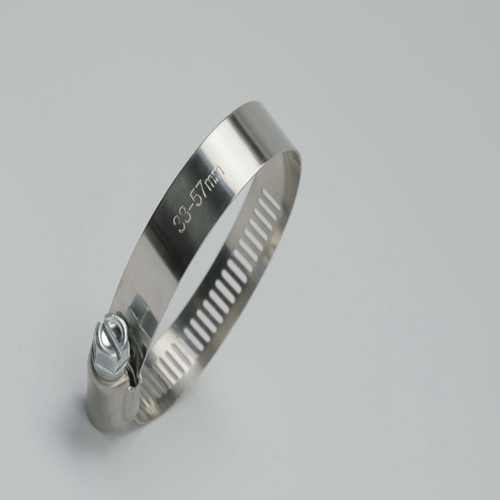- Phone:+86-17331948172 +86-0319-8862898
- E-mail: inquiry@puxingclamp.com
Oct . 19, 2024 00:19 Back to list
Wholesale Pricing for Hose Clamps and Their Torque Specifications
Understanding Wholesale Hose Clamp Torque A Comprehensive Guide
When it comes to securing hoses in various applications, hose clamps play a critical role. These essential components ensure that hoses remain attached to fittings, preventing leaks and maintaining fluid integrity. One of the most important aspects of using hose clamps effectively is understanding the torque specifications associated with their installation. This article delves into the topic of wholesale hose clamp torque, exploring its importance, factors influencing torque requirements, and tips for proper installation.
The Importance of Torque in Hose Clamps
Torque refers to the rotational force applied to an object, measured in units such as inch-pounds (in-lbs) or Newton-meters (Nm). In the context of hose clamps, the correct torque applies enough force to compress the hose against the fitting while avoiding damage to the hose or the clamp itself. Proper torque ensures a secure seal, which is crucial in preventing leaks, especially in high-pressure applications.
Failure to apply the correct torque can lead to various issues. Under-tightening can result in leaks, as the clamp may not hold the hose securely against the fitting. Conversely, over-tightening can cause damage to the hose or the fittings, such as crushing or deforming the material. Consequently, understanding and adhering to torque specifications is essential for maintaining the integrity of a fluid system.
Factors Influencing Torque Requirements
Several factors influence the torque requirements for hose clamps, including
1. Hose Material Different materials have varying elastic properties. Rubber hoses, for instance, may require different torque settings compared to thermoplastic or metal hoses. It's crucial to consider the material's flexibility and structural integrity to determine the appropriate torque.
2. Clamp Type There are several types of hose clamps available, such as worm gear clamps, spring clamps, and band clamps. Each type has distinct designs and mechanisms, which can affect the amount of torque needed for effective sealing.
3. Size and Diameter The size of the hose and the clamp will also dictate the torque requirements. Larger clamps may require more torque to achieve the same level of tightness as smaller clamps due to the increased surface area.
4. Operating Conditions Environmental factors such as temperature, pressure, and exposure to chemicals can impact the performance of hose clamps. Higher pressures or extreme temperatures might necessitate tighter torque settings to ensure a secure fit.
wholesale hose clamp torque

5. Installation Technique The method used to apply torque is just as critical as the amount of torque itself. When installing hose clamps, it’s essential to use the appropriate tools and techniques to ensure even distribution of torque across the entire surface.
Tips for Proper Torque Application
Achieving the right torque setting requires attention to detail and proper technique. Here are some tips for ensuring effective installation of hose clamps
1. Use a Torque Wrench A torque wrench is an essential tool for accurately measuring and applying torque. This is especially important for applications that require precise torque specifications.
2. Consult Manufacturer Specifications Always refer to the manufacturer's guidelines regarding torque settings. These specifications are based on extensive testing and are crucial for ensuring the proper function of the hose clamp.
3. Tighten Gradually When installing a hose clamp, tighten it gradually rather than applying full torque in one go. This helps to evenly distribute the load and avoid deforming the hose.
4. Check for Leaks After installation, it's vital to check for leaks. A simple visual inspection or a pressure test can help identify any issues with the seal.
5. Regular Maintenance Periodically inspect hose clamps for signs of wear, corrosion, or incorrect torque. This proactive approach can help prevent failure and extend the lifespan of the components.
Conclusion
Understanding and applying the correct torque when installing wholesale hose clamps is crucial for ensuring a secure and leak-free connection. By considering factors such as hose material, clamp type, and operating conditions, and by following proper installation techniques, users can achieve optimal performance from their hose clamp systems. Ultimately, investing time and effort into mastering these aspects not only increases safety and efficiency but also saves time and resources by preventing potential failures in the future.
-
Large Stainless Steel Adjustable American Type Hose Clamp - Hebei Pux Alloy Technology Co., Ltd
NewsAug.02,2025
-
Large Stainless Steel Adjustable American Type Hose Clamp - Hebei Pux Alloy Technology Co., Ltd
NewsAug.02,2025
-
Large Stainless Steel Adjustable American Type Hose Clamp-Hebei Pux Alloy Technology Co., Ltd|Corrosion Resistance, Adjustable Design
NewsAug.02,2025
-
Large Stainless Steel Adjustable American Type Hose Clamp-Hebei Pux Alloy Technology Co., Ltd|Corrosion Resistance, Adjustable Design
NewsAug.02,2025
-
High Quality Precision Stainless Steel Strip - GPT-4-Turbo Grade
NewsAug.02,2025
-
Heavy Duty Hose Clamp | Premium Durability & Security
NewsAug.01,2025




